
How to Use Stepper Motor 2: Examples, Pinouts, and Specs
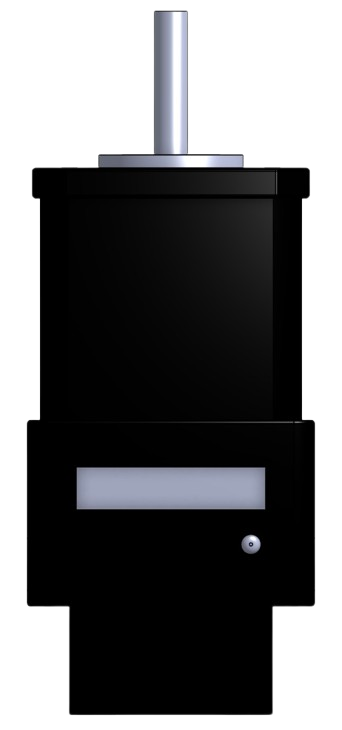
 Design with Stepper Motor 2 in Cirkit Designer
Design with Stepper Motor 2 in Cirkit DesignerIntroduction
The Stepper Motor 2 (STP-MTRD-17038E), manufactured by Automation Direct, is a high-performance stepper motor designed for precise control of angular position and speed. Unlike traditional DC motors, stepper motors divide a full rotation into a large number of discrete steps, making them ideal for applications requiring accurate positioning and repeatable motion.
Explore Projects Built with Stepper Motor 2
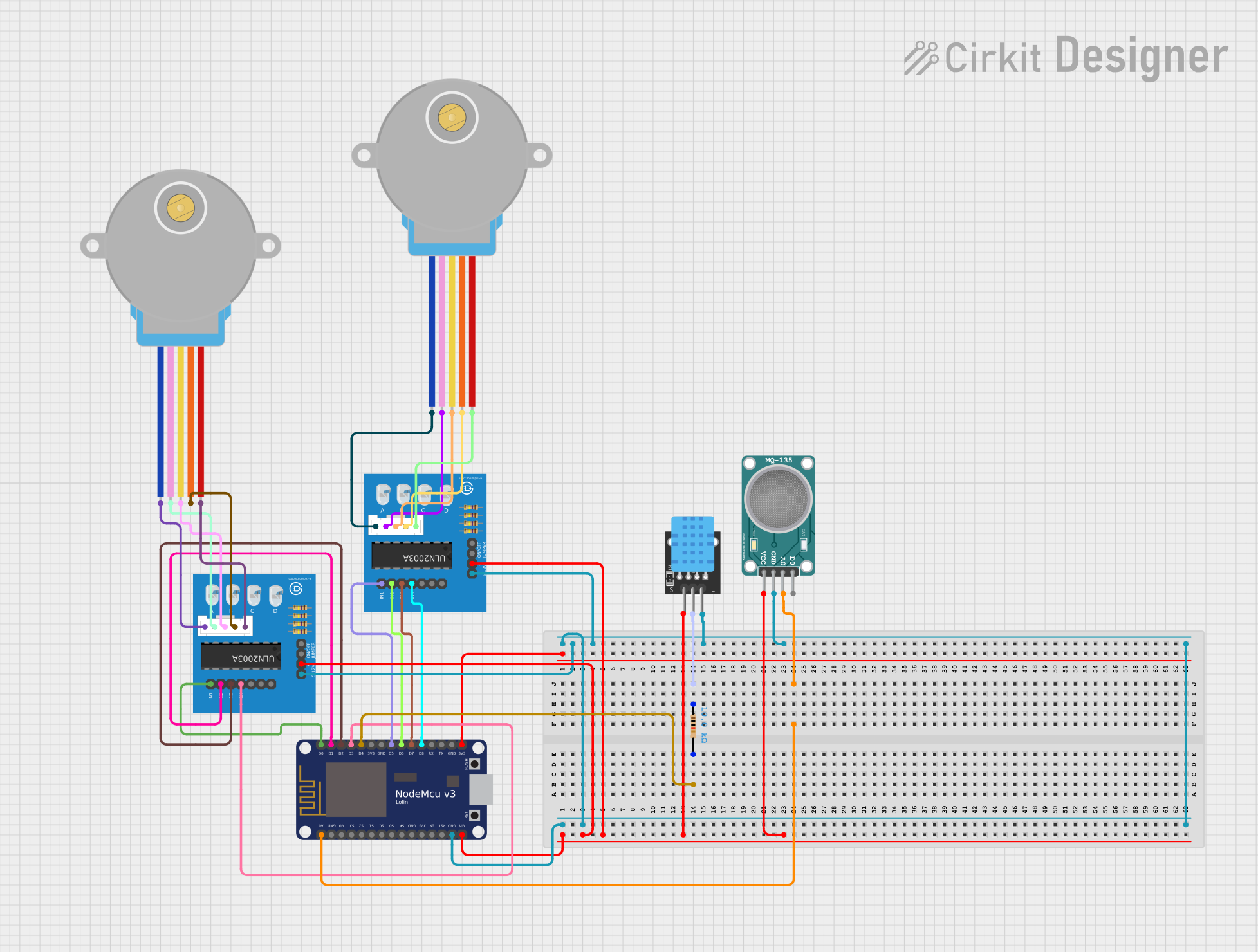
 Open Project in Cirkit Designer
Open Project in Cirkit Designer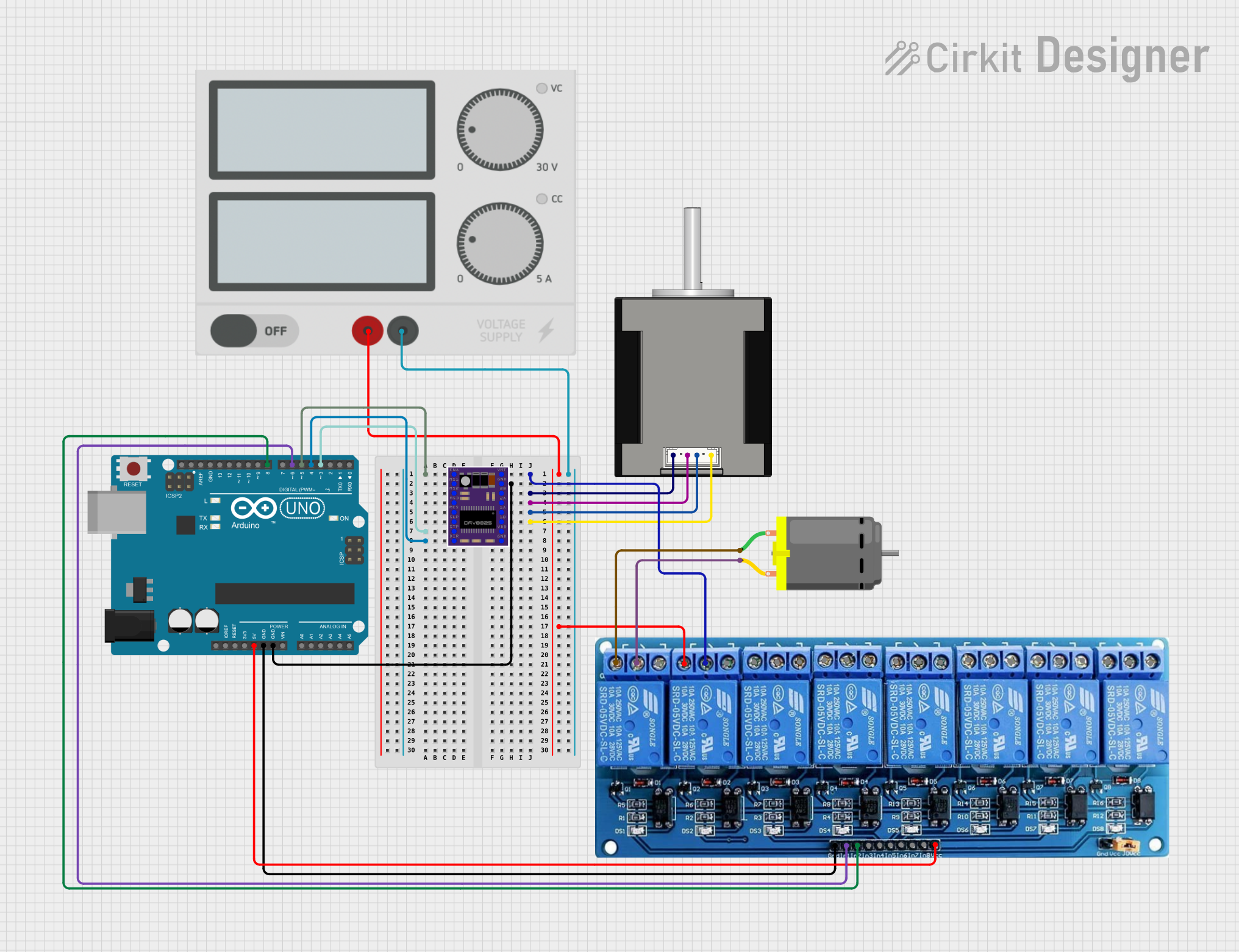
 Open Project in Cirkit Designer
Open Project in Cirkit Designer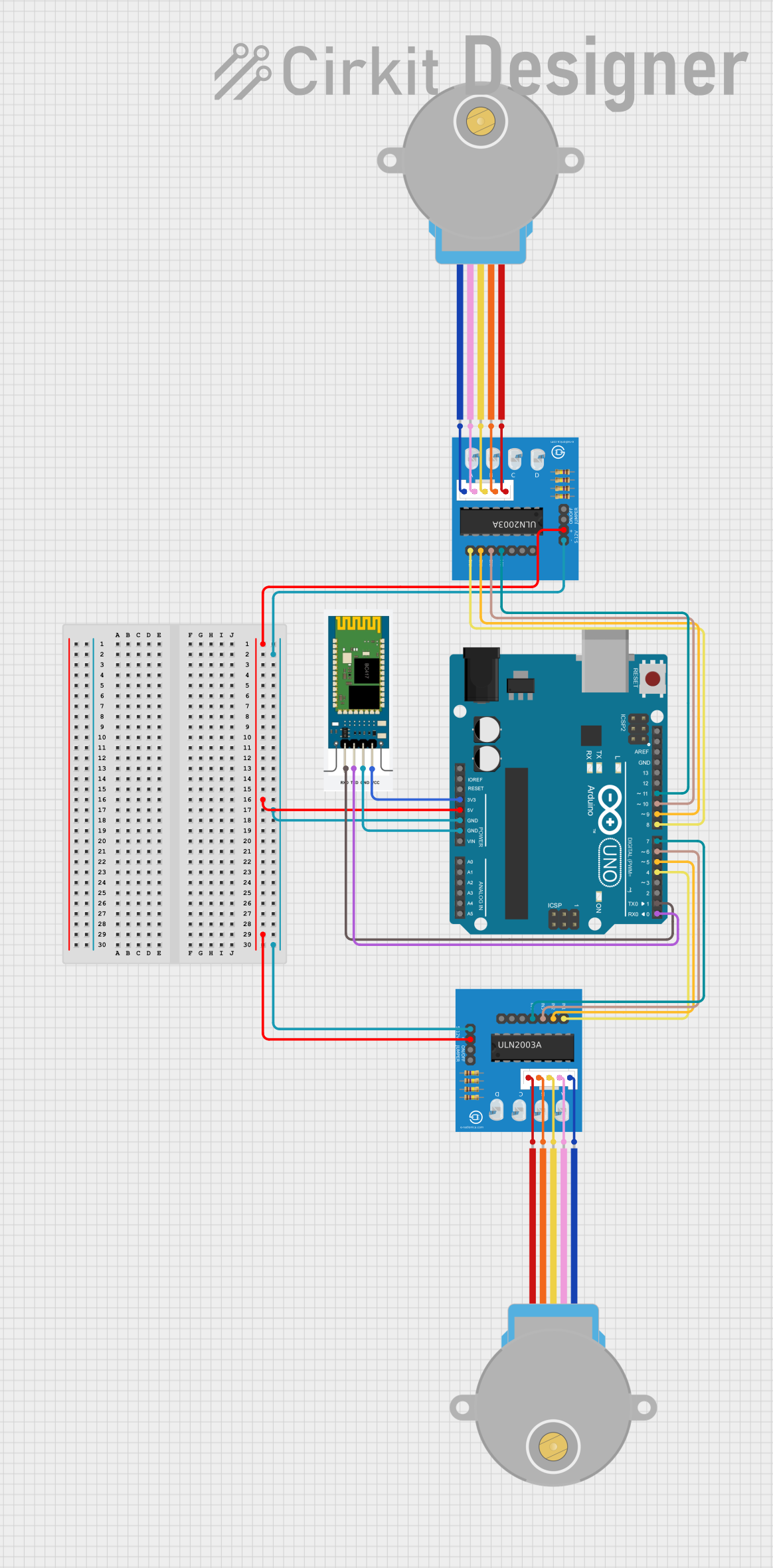
 Open Project in Cirkit Designer
Open Project in Cirkit Designer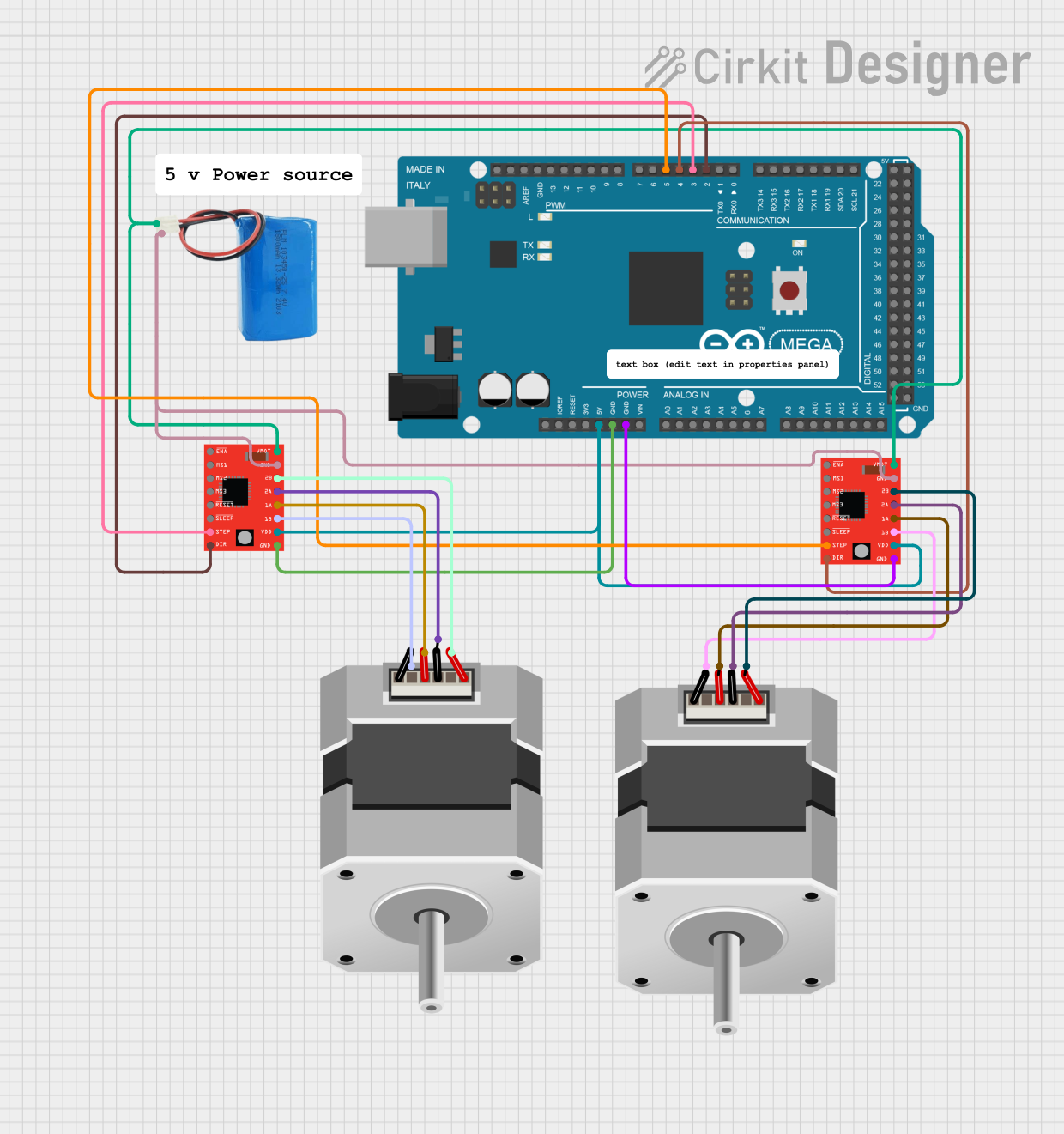
 Open Project in Cirkit Designer
Open Project in Cirkit DesignerExplore Projects Built with Stepper Motor 2

 Open Project in Cirkit Designer
Open Project in Cirkit Designer
 Open Project in Cirkit Designer
Open Project in Cirkit Designer
 Open Project in Cirkit Designer
Open Project in Cirkit Designer
 Open Project in Cirkit Designer
Open Project in Cirkit DesignerCommon Applications and Use Cases
- 3D Printers: For precise movement of print heads and platforms.
- CNC Machines: For accurate control of cutting tools and workpieces.
- Robotics: For controlling joint movements and actuators.
- Automated Systems: Used in conveyor belts, pick-and-place machines, and more.
- Camera Gimbals: For smooth and precise camera positioning.
Technical Specifications
The following table outlines the key technical details of the STP-MTRD-17038E stepper motor:
| Parameter | Value |
|---|---|
| Manufacturer | Automation Direct |
| Part Number | STP-MTRD-17038E |
| Step Angle | 1.8° per step |
| Holding Torque | 1.26 Nm (178 oz-in) |
| Rated Current per Phase | 2.8 A |
| Voltage | 2.55 V |
| Resistance per Phase | 0.91 Ω |
| Inductance per Phase | 3.6 mH |
| Number of Leads | 4 |
| Shaft Diameter | 6.35 mm (0.25 in) |
| Motor Frame Size | NEMA 17 |
| Weight | 0.5 kg (1.1 lbs) |
Pin Configuration and Descriptions
The STP-MTRD-17038E is a 4-wire bipolar stepper motor. The pinout is as follows:
| Wire Color | Function | Description |
|---|---|---|
| Red | Coil A+ | Positive terminal of Coil A |
| Blue | Coil A- | Negative terminal of Coil A |
| Green | Coil B+ | Positive terminal of Coil B |
| Black | Coil B- | Negative terminal of Coil B |
Usage Instructions
How to Use the Component in a Circuit
- Power Supply: Ensure the motor is powered by a suitable stepper motor driver capable of handling the rated current (2.8 A per phase) and voltage (2.55 V).
- Driver Connection: Connect the motor's wires to the stepper motor driver as follows:
- Red and Blue wires to Coil A terminals.
- Green and Black wires to Coil B terminals.
- Microcontroller Interface: Use a microcontroller (e.g., Arduino UNO) to send step and direction signals to the stepper motor driver.
- Step Angle Control: Adjust the step angle by configuring the driver for full-step, half-step, or microstepping modes.
Important Considerations and Best Practices
- Current Limiting: Set the current limit on the stepper motor driver to 2.8 A to prevent overheating.
- Heat Dissipation: Use a heatsink or cooling fan if the motor operates continuously at high loads.
- Power Supply: Use a power supply with sufficient current capacity to handle the motor and driver.
- Wiring: Ensure secure and proper connections to avoid missteps or damage to the motor.
Example Code for Arduino UNO
Below is an example of how to control the STP-MTRD-17038E using an Arduino UNO and a stepper motor driver:
// Include the Arduino Stepper library
#include <Stepper.h>
// Define the number of steps per revolution (360° / 1.8° = 200 steps)
#define STEPS_PER_REV 200
// Initialize the stepper motor object
// Pins 8, 9, 10, and 11 are connected to the driver inputs
Stepper stepperMotor(STEPS_PER_REV, 8, 10, 9, 11);
void setup() {
// Set the motor speed (in RPM)
stepperMotor.setSpeed(60); // 60 RPM
// Initialize serial communication for debugging
Serial.begin(9600);
Serial.println("Stepper Motor Test");
}
void loop() {
// Rotate the motor 1 full revolution clockwise
Serial.println("Rotating clockwise...");
stepperMotor.step(STEPS_PER_REV);
delay(1000); // Wait for 1 second
// Rotate the motor 1 full revolution counterclockwise
Serial.println("Rotating counterclockwise...");
stepperMotor.step(-STEPS_PER_REV);
delay(1000); // Wait for 1 second
}
Troubleshooting and FAQs
Common Issues and Solutions
Motor Not Moving:
- Cause: Incorrect wiring or loose connections.
- Solution: Double-check the wiring and ensure all connections are secure.
Motor Overheating:
- Cause: Current limit set too high on the driver.
- Solution: Adjust the current limit to 2.8 A or lower.
Skipping Steps:
- Cause: Insufficient torque or incorrect step signal timing.
- Solution: Reduce the load on the motor or increase the step pulse frequency.
Vibrations or Noise:
- Cause: Operating in full-step mode or resonance at certain speeds.
- Solution: Use microstepping to reduce vibrations and noise.
FAQs
Q: Can I use a higher voltage power supply?
A: Yes, but ensure the stepper driver regulates the voltage to the motor's rated voltage (2.55 V) and limits the current to 2.8 A.Q: What is the maximum speed of the motor?
A: The maximum speed depends on the driver, power supply, and load. Typically, stepper motors can achieve speeds up to 1000 RPM with proper tuning.Q: Can I use this motor with a unipolar driver?
A: No, the STP-MTRD-17038E is a bipolar stepper motor and requires a bipolar driver.
By following this documentation, users can effectively integrate the STP-MTRD-17038E stepper motor into their projects for precise and reliable motion control.